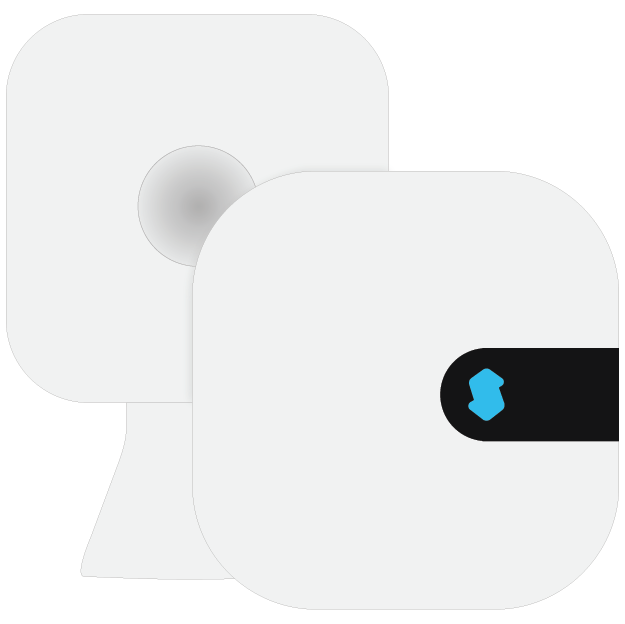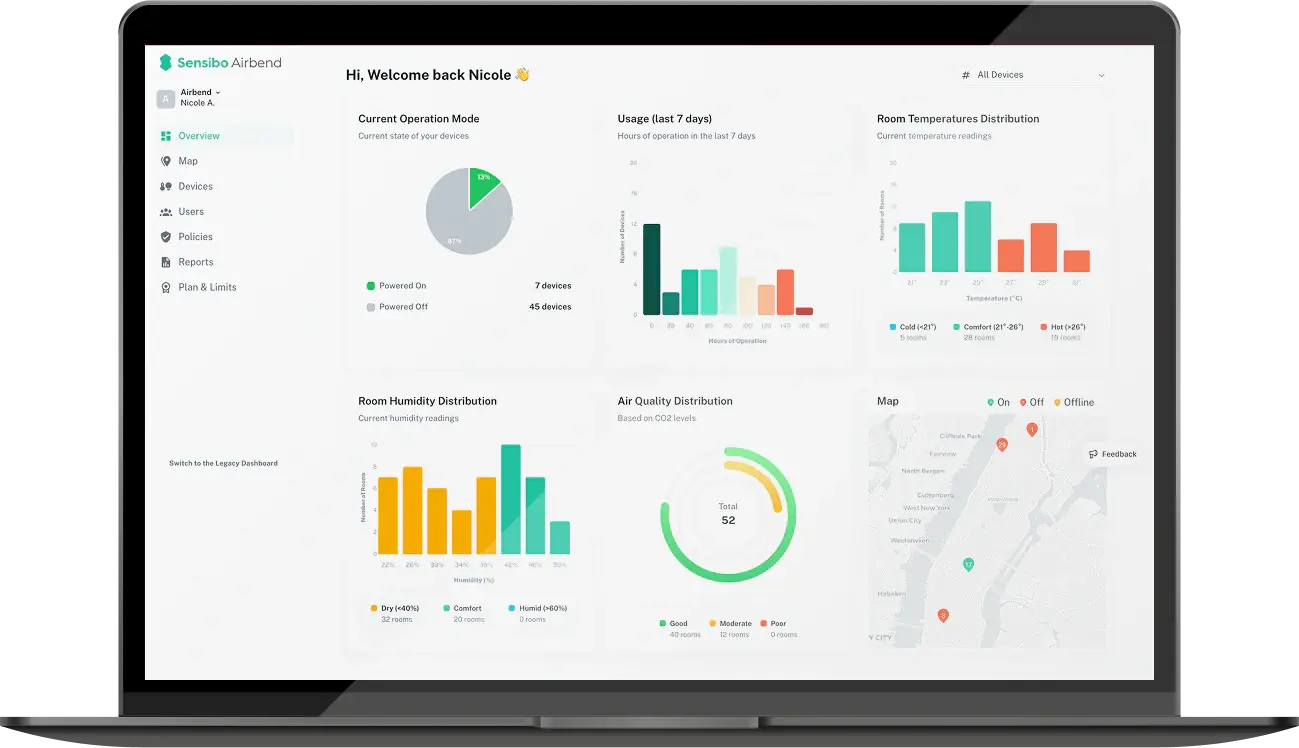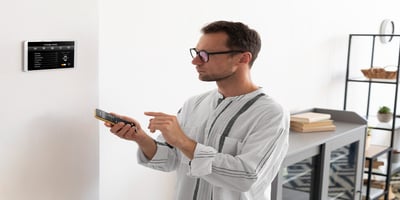Smart AC Controllers vs Traditional Thermostats: Which Saves More Energy?
Rising energy costs force homeowners to examine every aspect of their cooling systems for potential savings. The choice between smart AC controllers and traditional thermostat setups can significantly impact both comfort and monthly utility bills. Understanding the differences between these technologies helps determine which option delivers better energy efficiency and long-term value for your specific cooling needs.
Understanding the Key Players
The Baseline of Traditional Thermostats
A traditional thermostat operates through simple temperature sensing and manual control. Most models require physical adjustments to change temperature settings, while programmable versions allow basic scheduling capabilities. These systems rely entirely on user input and predetermined settings without adapting to changing conditions or occupancy patterns.
Regular thermostat units typically maintain fixed temperature ranges regardless of whether anyone occupies the space. This approach often leads to unnecessary energy consumption during unoccupied periods. Research indicates that 40-70% of programmable thermostat users never properly configure their systems, missing potential energy savings entirely.
Intelligent Climate Control with Smart Thermostats
Smart thermostat technology represents a significant evolution beyond traditional models. These WiFi-enabled devices connect to smartphone apps, allowing remote temperature control from anywhere with internet access. Advanced learning algorithms analyze usage patterns and automatically adjust settings to optimize both comfort and efficiency.
Key advantages include geofencing capabilities that detect when occupants leave or return home, weather integration for proactive adjustments, and detailed energy usage reporting. How does a smart thermostat save energy? Through automation that eliminates human error and forgetfulness while maintaining optimal temperature control based on actual occupancy and preferences.
Targeted Cooling Using Smart AC Controllers
Smart AC controllers serve a different purpose than traditional thermostats. These devices work specifically with individual air conditioning units, mini-splits, and heat pumps that use infrared remote controls. Rather than integrating with central HVAC systems, they provide intelligent control for standalone cooling equipment.
Smart controllers plug into standard outlets and communicate with AC units through infrared signals, essentially replacing basic remote controls with sophisticated automation. They offer scheduling, remote access, and energy monitoring specifically for individual cooling zones rather than whole-house systems.
Energy Efficiency Comparison
Smart Thermostat Performance
Energy Star-certified smart thermostat models deliver proven energy savings averaging 8% on heating and cooling costs. This translates to approximately $50 annual savings for typical American households spending $900+ yearly on climate control. Some advanced systems achieve savings up to 15% through optimized scheduling and learning capabilities.
The ability to save money and energy with a smart thermostat comes from automated temperature adjustments that most homeowners struggle to maintain manually. Studies show nearly 50% of households with programmable thermostats never configure them properly, while smart systems automate energy-saving behaviors without requiring constant user intervention.
Smart AC Controller Efficiency
Smart AC controllers can achieve energy savings up to 25%, specifically for individual cooling units. These devices excel at eliminating common wasteful behaviors like leaving AC units running in unoccupied rooms or forgetting to adjust temperatures when leaving home. Geofencing technology ensures that cooling only operates when needed.
The focused nature of AC controllers provides advantages in homes with multiple cooling zones. Rather than cooling entire houses uniformly, these systems allow precise control over individual spaces based on actual occupancy and usage patterns.
Traditional Thermostat Reality Check
While manufacturers historically claimed 10-30% energy savings from programmable thermostats, real-world results typically range from 6.2% to 10% under optimal conditions. The comparison reveals that traditional systems require significant user discipline to achieve meaningful savings.
The fundamental limitation lies in static programming requirements. Traditional thermostat systems cannot adapt to changing schedules, weather conditions, or occupancy patterns without manual intervention, leading to either energy waste or comfort sacrifices.
Feature Analysis Between Smart Thermostat and Traditional Thermostat
 Automation Capabilities
Automation Capabilities
Smart thermostat and controller systems eliminate the programming burden that defeats many traditional thermostat users. Automatic scheduling adapts to detected patterns rather than requiring manual configuration. This automation addresses the primary weakness of conventional programmable models.
Learning algorithms continuously improve efficiency by analyzing usage data and adjusting parameters accordingly. Over time, these systems become increasingly accurate at predicting optimal temperature settings for maximum efficiency without compromising comfort.
Remote Control and Monitoring
Both smart thermostats and AC controllers provide smartphone app access for temperature adjustments from any location. This capability prevents energy waste when plans change unexpectedly, allowing immediate temperature modifications without physical presence.
Energy usage tracking helps identify consumption patterns and optimization opportunities. Detailed reporting shows exactly when and how much energy cooling systems consume, enabling informed decisions about usage habits and efficiency improvements.
Integration Capabilities
Smart thermostat models often integrate with broader home automation systems, coordinating with smart blinds, lighting, and other climate-affecting devices. This ecosystem approach maximizes overall energy efficiency through coordinated operation of multiple systems.
Voice control through Amazon Alexa, Google Assistant, and Apple HomeKit provides convenient temperature adjustments without app interaction. These integrations streamline daily climate management while maintaining energy-conscious operation.
Installation and Compatibility Considerations
Smart Thermostat Requirements
Smart thermostat installation typically requires compatibility with existing HVAC wiring, particularly C-wire connections for consistent power supply. Most central air conditioning and heating systems support smart thermostat upgrades, though some older installations may need minor electrical modifications.
Professional installation ensures proper configuration and optimal performance, though many models support DIY installation with clear instructions. Compatibility verification before purchase prevents installation complications and ensures full feature functionality.
Smart AC Controller Setup
Smart AC controllers offer simpler installation processes since they work with any AC unit using infrared remote controls. Setup involves plugging the device into an outlet within infrared range of the target AC unit and completing app-based configuration.
No electrical modifications or HVAC system integration requirements make AC controllers accessible for renters and homes with older cooling equipment. The plug-and-play approach enables immediate smart functionality for existing systems.
Cost-Benefit Analysis
 Initial Investment Comparison
Initial Investment Comparison
Smart thermostat pricing ranges from $100-300 for quality models, while smart AC controllers typically cost $40-150 per unit. The choice between a smart thermostat and a regular one often depends on existing HVAC infrastructure and specific cooling needs.
Multiple AC units require individual controllers, potentially increasing total investment compared to single smart thermostat installations. However, the targeted control may provide better overall efficiency in homes with diverse cooling requirements across different zones.
Payback Period Calculations
Energy Star data suggests smart thermostats pay for themselves within 5 years through reduced utility costs. Smart AC controllers with 25% potential savings may achieve faster payback periods, particularly in homes with high individual AC unit usage.
Climate factors significantly impact savings potential. Homes in regions with extreme temperatures and high electricity rates see faster returns on smart climate control investments compared to moderate climate areas with lower energy costs.
Long-term Value Considerations
Save energy on AC investments extend beyond immediate utility savings. Smart systems often qualify for utility rebates and tax incentives, reducing effective purchase costs. Additionally, improved system monitoring can extend HVAC equipment lifespan through optimized operation patterns.
Property value benefits may result from smart home technology upgrades, though quantifying these advantages requires local market analysis. Energy-efficient home features increasingly influence buyer preferences in many markets.
Making the Right Choice: Smart AC Controllers vs Regular Thermostats
Central HVAC Systems
Homes with central air conditioning and heating benefit most from smart thermostat upgrades. These systems provide whole-house efficiency improvements while offering comprehensive climate control through single-device management.
The learning capabilities and weather integration features maximize savings potential for central systems that condition large spaces. Geofencing and scheduling automation address the primary weaknesses of traditional thermostat approaches.
Multi-Zone Cooling Scenarios
Properties with multiple individual AC units, mini-splits, or diverse cooling needs may find smart AC controllers more effective. Room-by-room control allows precise energy management based on actual space utilization rather than uniform house-wide settings.
Rental properties and older homes without central HVAC infrastructure particularly benefit from AC controller flexibility. The ability to add smart functionality without system modifications provides immediate efficiency improvements.
Budget and Feature Priorities
The decision between smart options depends on specific efficiency goals and budget constraints. Smart thermostat systems offer comprehensive climate control with broader integration possibilities, while AC controllers provide targeted efficiency for individual cooling zones.
Consider existing equipment compatibility, desired automation level, and specific energy-saving priorities when evaluating options. Both approaches deliver significant improvements over basic traditional thermostat operation when properly implemented.
.jpg?width=800&height=400&name=closeup-shot-mounted-white-wall-climate-control-showing-242-degrees-indoors-remote-air-conditioner-inside-smart-home-closeup-no-people-modern-technologies-concept-comfortable-life%20(1).jpg) Maximizing Energy Savings Regardless of Choice
Maximizing Energy Savings Regardless of Choice
Optimal Temperature Settings
Research confirms that raising cooling temperatures by 7-10 degrees for 8 hours daily can reduce energy consumption by up to 10%. Smart systems automate these adjustments while maintaining comfort during occupied periods.
The Department of Energy recommends 78°F when home, 85°F when away for optimal efficiency. Smart technology makes these aggressive settings practical through automated comfort recovery before occupants return.
Maintenance and Optimization
Regular filter changes and system maintenance maximize efficiency regardless of thermostat choice. Smart systems often provide maintenance reminders based on actual usage patterns rather than arbitrary time intervals.
Monitor energy usage reports to identify optimization opportunities and verify expected savings. Both smart thermostats and AC controllers provide data insights that traditional systems cannot offer.
Verdict: Which Is the Most Energy-Efficient?
Smart AC controllers typically achieve higher energy savings percentages (up to 25%) for individual cooling units, while smart thermostat systems provide comprehensive whole-house efficiency averaging 8% savings. The optimal choice depends on existing infrastructure, cooling requirements, and specific efficiency goals.
For central HVAC systems, smart thermostats offer superior integration and learning capabilities. Homes with multiple individual AC units or diverse cooling needs benefit more from targeted AC controller deployment. Both options significantly outperform traditional thermostat approaches through automation that eliminates human error and optimizes operation based on actual usage patterns.
The question isn't whether to upgrade from traditional systems, but rather which smart solution best matches your specific cooling infrastructure and energy-saving priorities.
FAQ
Can I use both a smart thermostat and smart AC controllers in the same home?
Yes, many homes benefit from combining both technologies. Use a smart thermostat for central HVAC control and AC controllers for individual mini-splits or window units in specific zones.
Do smart AC controllers work with all air conditioner brands?
Smart AC controllers work with any AC unit that uses an infrared remote control, regardless of brand. They replace the existing remote with a WiFi-enabled smart control while maintaining all original functionality.
How much can I realistically expect to save with either option?
Smart thermostats average 8% savings ($50/year), while smart AC controllers can achieve up to 25% savings on individual units. Actual savings depend on current usage habits, local energy rates, and climate conditions.
Which option is better for rental properties?
Smart AC controllers are typically better for rentals since they require no permanent installation or electrical modifications. They provide immediate smart functionality without altering existing HVAC infrastructure.






































